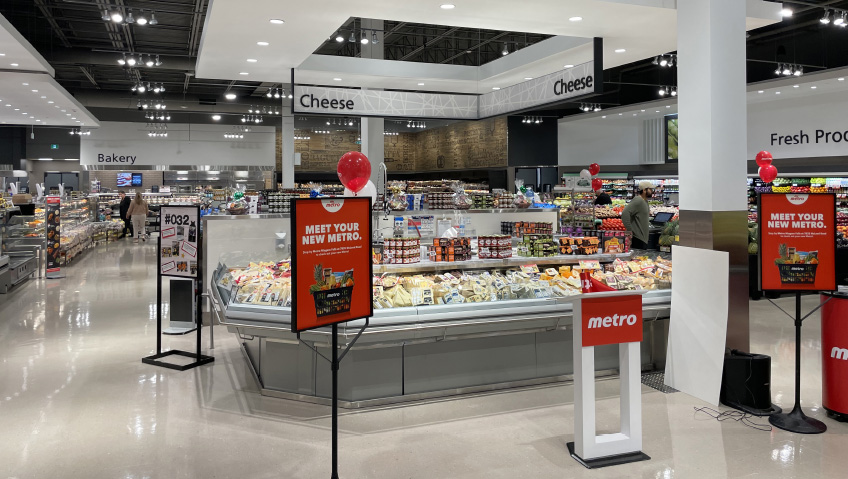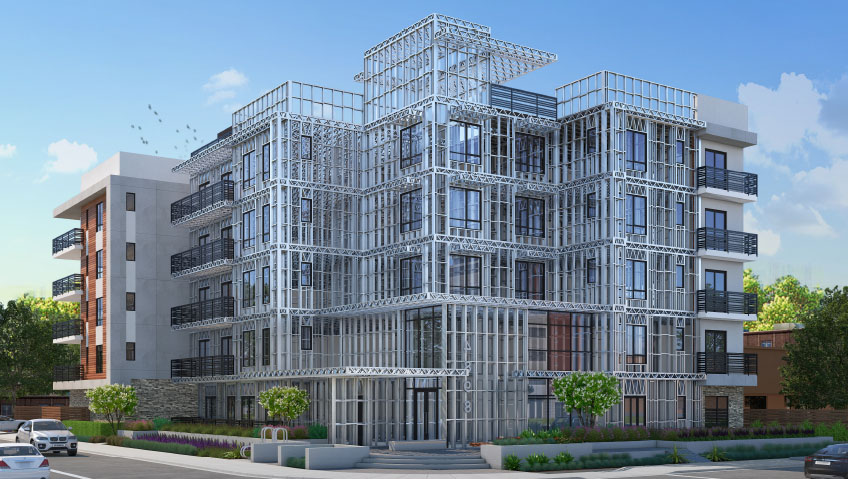Ronnette Riley Architect, based in New York, combines female leadership, seasoned expertise, and diversity to accomplish true design excellence. The firm specializes in an impressive range of architectural fields, and its team is also well-versed in flowing between projects with ease—like when one of its architects worked simultaneously on a lingerie store and Sing Sing Correctional Facility in Ossining, New York.
Hiring a diverse team was a conscious decision on Riley’s part. “There was one moment when every person in my office spoke two, three—and one person, four—languages, except me, but I have been learning Spanish,” says Ronnette Riley, owner, founder, and one of the few female architects of her generation. She highlights that hiring foreign people, even on foreign intern programs, adds interest and brings entirely different angles to look at design since, while some countries focus more on the aesthetic aspect of design, others are more technically based. “It is good to have them all in the same office,” she says.
The Ronnette Riley team has won many prestigious awards and appeared in almost as many publications with over one thousand projects and a portfolio stretching fifteen states and seven countries including Italy and France, the United Kingdom, and Japan. Given its wide reach, its team works where its clients are. That is also why much of its work is from return clients who moved away but want the company to design their new buildings in other locations. Its relationships with many of these clients go back more than three decades.
At present, the company runs several ongoing projects, including one in Minnesota, three in California, two in Connecticut, one in New Jersey, and several others in New York State and New York City. It also has a prime contract with the Metropolitan Transportation Authority after a successful collaboration on Pennsylvania Station in New York City.
Its awards for outstanding, innovative work are the result of its commitment to excellence and attention to detail. Among these are the Awards Society of American Registered Architects Honor Award for its work on the Fire Department of New York Emergency Station 39 in Brooklyn, New York; and the New York Awards Friends of the Upper East Side Historic District Excellence in Storefront Design Award for its collaboration with Yves Saint Laurent Boutiques, New York.
After the first few years in architecture, Riley and her team deliberated on what the firm’s future ought to look like and its true purpose. Everyone agreed that doing good was what they wanted to do. This decision led the company to pivot from doing mainly private sector work to where it is today, performing more government public projects and achieving its original goal of improving the world.
Creating the shift was not easy at first. Kept busy with private projects on one hand due to its good reputation, and kept waiting on the other due to lengthy public processes involved in the bidding, really getting its teeth into public projects was a challenge.
“It has been harder for us to… push the envelope on design. We do good work for community centers, libraries, and projects like that but it is sometimes hard for us to get that beautiful photo for the magazines,” says Riley.
Riley is proud of how far women have come in the industry since her arrival on the architecture scene in New York. Back then, less than one percent of architects were female, in contrast to today, where around 14 percent of qualified architects are women. “We are fully woman-owned. The U.S. allows you to say that you are women-owned when you are 51 percent. Most teams you hear about are husband and wife teams, which is very different from being a woman alone. We like to say that we are a real woman-owned firm,” she says.
She works with remarkable passion in a rather demanding profession and also serves on the American Institute Architects Committee on Design. The biannual conferences here and abroad with the Institute form part of the lifestyle she has carved out for herself within the industry and so do the friendships and partnerships of several decades that developed over the years. “To understand the job, we have to understand the client. To me, that is very interesting. Whether you are designing a courthouse, firehouse or a Park Avenue apartment,” she says.
There were many big moments. Riley had the great fortune of working on Steve Jobs’ first Apple store, which won the company nearly twenty awards alongside appearances in several publications. She also won a contract to design a large store for The Coca-Cola Company in its former building on Fifth Avenue. Many other prestigious projects also afforded her the privilege of gaining insight into the mindsets of some of the world’s smartest businessmen, whose focus on their businesses left the biggest impression on her.
Beyond retail, the company also designed multi-family homes, hotels, and, more recently, libraries and firehouses. For this, having a good grasp of firefighting in a world of technology, for instance, is imperative. Unlike the old days when firefighters like Riley’s father and brother got on with the job and suffered the ill effects it had on their health, technology is revolutionizing its safety aspects, hugely improving the health of those who risk their lives in such situations. Naturally, these projects are particularly close to her heart.
The formidable leader started her career working for Philip Johnson, a Pritzker Prize recipient famous for designing landmarks like New York’s Lipstick Building and the Museum of Modern Art, Houston’s Williams Tower, and many others. “I was the youngest person and the only woman ever to do a skyscraper from start to finish at that firm. I like a good fight, so I just keep punching away trying to prove people wrong,” she says. When Riley was told by one of the leaders of the company that she was too ambitious and aggressive to promote, she defied him, deciding to strike out on her own and become a self-made woman, and so, she did.
Fate was on her side when a client offered her a freelance project and more money in return for her work than her annual earnings. That was all Riley needed to take the leap. “I told the client he could buy me a Porsche or he could pay me hourly. He laughed and said that he would pay me hourly. About halfway through the project, he said ‘I guess I should have bought the Porsche,’” she says with a smile.
As an astute businesswoman, she is no stranger to hard work. As such, financial stability meant enough to her that she offered profit sharing, healthcare, and other benefits as part of her team’s perks from day one to ensure that people are genuinely taken care of despite the fiscal challenges fledgling businesses face. The greatest challenge in the early days was landing projects to design freestanding buildings. Most of the work, at least initially, was for apartment renovations and retail stores.
Eventually, the tide turned thanks mostly to referrals, and today, the company does its fair share of freestanding building design. This year alone, it is working on two ground-up building projects, one of which is a five-story firehouse in Queens, New York, and a 25,000-square-foot net-zero, senior center in East Hampton, New York.
Riley points out that young women today have a bigger chance of landing jobs designing freestanding buildings than women did four decades ago. To those women just beginning the discipline, her advice is to cultivate a network of industry professionals and develop a strategy for the trajectory of their career. “The beauty of architecture is that you do not know until the end of your career if you were a success. The longer you do it, the better you become,” she adds.
Today, as the company’s public work grows, the team designs an increasing number of buildings that truly touch the lives of those who use them. One project was the pro-bono design of a children’s library in Harlem, New York. Challenging on several fronts, the school it now belongs to is vastly enhanced as a result of the new amenity.
“One sixth-grader put up his hand and said that it was the most beautiful space he had ever been in. To realize that that space had an impact on that child almost made me cry,” Riley says, emphasizing how important it is to make every client a part of the design team to ensure that the group finds the best design project solutions after all influencing factors have been thoroughly considered.
Upon being asked for the most memorable piece of advice she ever received, Riley responds without hesitance. “Paul Segal, a fellow architect, once told me that one bad client requires more time than twenty good ones.” It would take her a few years to fully grasp what he meant but she soon enough learned how important it is to carefully vet clients and get payments in regularly and on time. That not only protects the business’ finances but also garners clients’ trust in terms of protecting their budgets.
When considering succession Riley is clear that she is not planning to leave the field for quite a few years but, when the time comes, her successors, whom she aims to pick from her existing team, will be ready for their new roles. “We grew so big, and we were so busy the last couple of years that I have clients I have not met and projects I have not had site visits to,” she says as a testament to the quality of her senior architects.
Riley is passionate about empowering her staff and giving them the tools they need to thrive in their roles while keeping a watchful eye over projects. “I try to let people have ownership in the projects they work on,” she adds, and the approach works because the company is growing. In fact, it recently expanded its offices to a third of the floor below to accommodate new team members.
When exploring the definition of good design, Riley proposes one question. “Does it make you happy?” It was in response to this concept that Riley rented her first office in the Empire State Building for the simple reason that she revels in passing through its beautiful lobby. That makes her happy.
No matter the budget, the team always adds this touch of ‘wow’ to every design. The company is also acutely aware of considering sustainability. As an undergraduate, Riley attended the University of California, Berkley’s College of Environmental Design. She spent summers around Navaho reservations in Utah where the desert became dotted with tiny, concrete, government-built dwellings meant to replace the traditional “Hogan”—a cone-shaped mud hut considered an early energy-efficient home.
“Environmentally, [the huts] made sense in the desert but when I got into Harvard University’s Graduate School of Design, nobody cared about sustainability. We used to sneak environmentally sensitive materials into our early work, and all of a sudden, everybody jumped on the bandwagon,” she says, affirming that environmental stewardship should not be a category but rather a matter of course.
An important point is that quality design is more sustainable than ripping out and replacing interior elements regularly or repairing eco-friendly finishes with standard products. Using low-quality yet environmentally sustainable materials can also work against itself when fabrication, shipping, and installation costs are taken into account as these will not last and that is not good for the planet in the long run. When looking at the financial cost of net-zero projects, for instance, Riley recommends looking at the initial capital outlay compared to the cost of running such a property or building.
According to her, the challenge hits when there are two very different groups of people handling each budget as each of them naturally has an opposing mandate. “Sometimes if you spend double the amount of money on a particular light fixture with reduced heat emissions, one can save significant amounts on air conditioning each year over the life of a building. Capital budgets don’t always allow for that logic,” she says.
As part of her drive to do good in the world, Riley serves as President of the East Hampton Artists and Writers Charity Softball Game. In existence for seventy-five years, the game welcomes celebrities from both disciplines who participate to raise funds for local social services.
While we explore the future of architecture and design, Riley shares her support of Scandinavian school systems that teach children a truly sophisticated appreciation of good design. Color is one of her passions. “People have to give up on gray. There is a lot of joy to be had in color. I use a lot of it in my work,” she says. Considering the dynamic team’s approach to design, I think it is safe to say that Ronnette Riley Architect makes people happy.






